 Protecting your businesses Intellectual Property is vital for your long term success. Indeed, a business operating without IP knowledge is putting themselves at huge risk.
Protecting your businesses Intellectual Property is vital for your long term success. Indeed, a business operating without IP knowledge is putting themselves at huge risk.
Protecting your intellectual assets is what we do best.
Under the heading of IP are:
Trade Secrets, patents, designs, copyright, trademarks, circuit layout rights & plant breeders rights.
It’s vital to claim legal ownership of these if they are your property.
IP Audit
We can work with you to assess your IP position and advise on IP protection where necessary.
What is the potential business value of your IP? Conduct an audit to identify your IP assets.
Consider the importance of IP assets to have confidence with business strategy going forward.
What is Intellectual Property?
Intellectual property means: the ownership of ideas or a collection of ideas and concepts.
There are three ways of protecting your intellectual property in Australia, through the use of patents, trademarks or copyright.
A patent applies to a specific product design; a trademark applies to a name, phrase or symbol; and copyright to a written document.
Which intangible assets in intellectual property IP could add value to your balance sheet?
Protect your IP used in product or service delivery.
Do you have custom industrial designs that provide competitive advantage that should have IP Australia protection?
Patents
Patents protect processes, methods and inventions that are “novel,” “non-obvious” and “useful.” If granted, a patent gives you a 20-year monopoly on selling, using, making or importing your invention into Australia. Safeguard your business cash flows during business scale up. The requirements for a patent are complex, but here they are in a nutshell:
You can only patent inventions that are:
- Novel or New.
- Non-obvious: Your invention must be sufficiently different. Just substituting one material for another or changing the size of something is not usually patentable. So even if your invention has not been made before in exactly the same way, if the differences between it & the next similar thing already known are just too obvious (too close to being the same) your patent will be declined.
- Inventions must be useful. Your invention must have a practical purpose and it must work!
Trade Secrets
Trade secrets refer to items such as recipes that are unique and provide a business with a competitive advantage, but which cannot be safeguarded under current forms of idea protection such as copyright, trademark or patent.
The best form of protection for these items is to keep them a secret. One of the most famous and best-kept trade secrets is the formula for Coca-Cola.
The best way to secure the information for a trade secret is to restrict access to the secret and have individuals and companies sign nondisclosure agreements with you should you enter into a relationship with them which will require them to know some aspects of the secret.
Trademarks
A trademark is like a brand name. It is any word(s) or symbol(s) that represent a product to identify and distinguish it from other products in the marketplace. The (TM) mark may be used immediately next to your mark. The ® registration symbol may only be used when the mark is registered. It is unlawful to use this symbol with your mark before receiving an issued registration from the PTO.
A strong trademark is a mark that is distinctive. The more distinctive it is, the easier your trademark will be to enforce.
Register your trade mark to protect your business name, brand or logo.
Copyright Protection
Copyright will protect the following categories of works:
- musical works, including any accompanying words
- dramatic works, including any accompanying music
- pantomimes and choreographic works
- pictorial, graphic and sculptural works
- motion pictures and other audiovisual works
- sound recordings
- architectural works
- computer programs (sometimes the graphical user interface) and websites
- literary works
Copyright protection gives the copyright holder the exclusive right to copy the work, modify it (that is, create “derivative works”), and distribute, perform and display the work publicly.
Ideas or concepts do not have copyright protection. Copyright protects the expression of the idea, but not the ideas themselves.
Can your Australian copyright media be adapted to international markets and other languages?
5 Fabulous Milestones Every Inventor Must Hit To Join The Ranks Of Successful Product Creators
Inventor product development roadmap.
Successful product development.
Shows the milestones to product success.
Turning ideas into profit.
So, if you want to know how to create products for commercialisation, here are some milestones for you:
Milestone # 1 – Provisional Patent
Protects the invention date from competitors
Lasts 12 months
Provides time to refine your product design
Test your idea for product market fit
Milestone # 2 – Full Patent
Create the final graphics and artwork for your product
Document the final design
Prepare and submit the patent to intellectual property office
Milestone # 3 – Commercialisation
Organise product manufacturing and distribution
Implement the marketing strategy
Scale up the business
Milestone # 4 – International Patent
Apply for world intellectual property protection by country
Use the Patent Cooperation Treaty PCT process to make the paperwork requirement easier
Milestone # 5 – Global Product Success
Market into other countries
Scale up business to an international level
Contact us to advance your invention development journey.
Want even more?
Well, you can grab this New Intellectual Property at a Glance PDF on how to create products for commercialisation!
You can download it here:
https://inventionpathways.com.au/contact-us/
Unsure of your next step? Call us to discuss your personalised invention pathway.
Who Should Know About Intellectual Property?
Inventors, innovators & business owners need to know about intellectual property and how to protect their ideas and their intellectual assets.
Registered Designs
Registered designs are used to protect the visual appearance of products.
Examples of registrational designs include clothes designs, vehicle designs, electronic device designs, sports equipment designs and container designs, furniture designs, appliance designs etc. In order to register a design it must be ‘new and distinctive’.
‘New’ means that the design (or one very similar) has not been publicly used in Australia and has not been published anywhere in the world.
A Distinctive design is one that is substantially different in overall appearance to other designs in the public domain.
A registered design which has been examined and certified gives you a legally enforceable right to use your product’s design to gain a marketing advantage. It also prevents others from using the design without your agreement.
